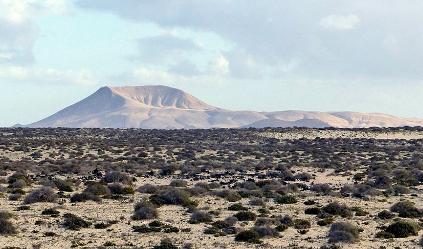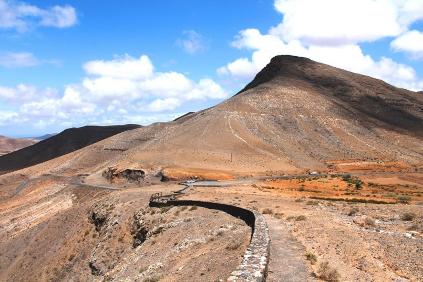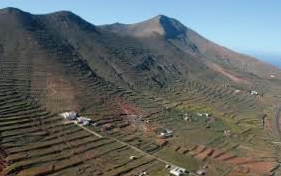Villages of the North

La Oliva, the Home of Sunny Canaries
The North of the island is very cosmopolitan, you can find many nationalities living together with the friendly local people. The north comes under the Municipality of La Oliva, the Population is around 10.000 and the main tourist concentration is in Corralejo.
The municipality of La Oliva covers an area of 356.13 km2 (21.5% of the island) including the Lobos Islet and 14.2% of the area is protected natural space.
It is one of the richest archaeological areas on the island and the natural park of Corralejo has a spectacular area of dunes, a badlands sector and a volcanic cone (Montaña Roja).
The North of the island is very cosmopolitan, you can find many nationalities living together with the friendly local people. The north comes under the Municipality of La Oliva, the Population is around 10.000 and the main tourist concentration is in Corralejo.
The municipality of La Oliva covers an area of 356.13 km2 (21.5% of the island) including the Lobos Islet and 14.2% of the area is protected natural space.
It is one of the richest archaeological areas on the island and the natural park of Corralejo has a spectacular area of dunes, a badlands sector and a volcanic cone (Montaña Roja).
The Lobos Island Natural Park houses some 130 species of animals and plants, in the middle of landscape barely altered by man.
The
crystal clear ocean and climate conditions make the municipality the
perfect place for a huge variety of water sports including, surf,
windsurf, kitesurf, sup and diving. Deep Sea Fishing, Horse Riding, Boat
trips, Trekking and Mountain Biking are all available in the north.
Link to Sports
Link to Sports
The
municipality is made up of the villages of La Oliva, Tindaya,
Vallebrón, La Caldereta, El Cotillo with its beautiful beaches, El
Roque, Lajares, Villaverde, Corralejo, Majanicho and Parque Holandés. In
addition to these villages there is also Lobos Islet.

Montaña Roja

"Paisaje Protegido de Vallebrón"
Between La
Oliva, Lajares and Villaverde, the La Arena Badlands Natural Monument
was created around 10,000 years ago by volcanic eruptions. These gave
rise to a landscape of great beauty and shape that has not been
significantly changed by humans over the years. There are nearly 900
acres of badlands, which surround the emitting: Volcano Arena, 420
meters high and the source of this landscape.
In the interesting landscape of "badlands sectors," and volcanic cones, some particularly spectacular cones are Montaña Roja, (near the sand dunes natural park) Volcano Arena (between Villaverde and La Oliva and Calderon Hondo (near Lajares.).
The protected landscape "Paisaje Protegido de Vallebrón" retains the structures built by man for the agricultural exploitation of the land in the middle of a fertile valley.
In the interesting landscape of "badlands sectors," and volcanic cones, some particularly spectacular cones are Montaña Roja, (near the sand dunes natural park) Volcano Arena (between Villaverde and La Oliva and Calderon Hondo (near Lajares.).
The protected landscape "Paisaje Protegido de Vallebrón" retains the structures built by man for the agricultural exploitation of the land in the middle of a fertile valley.

Places of archaeological interest:-
The municipality is one of the richest archaeological areas on the island of Fuerteventura.
The mountain Montaña de Tindaya is an extraordinary space that is of significant archaeological and geological value. It contains petroglpyhs on Mount Tindaya and ensembles formed by the remains of structures, inhabited caves, funeral caves and remains of “concheros” (deposits of collected shells, molluscs, etc.).
The Llano de Villaverde cave living quarters is important; artifacts such as ceramics and mollusk shells from aboriginal peoples have been found there. Important paleontological remains are also to be found in the same place.
Aboriginal burial sites have been found in the Esquinzo cave, the Guriame cave, the Villaverde bone cave and in the Los Ídolos cave which, sited on the southern border of the La Arena badlands, features ceramic funeral furnishings, everyday utensils made of stone and bone and, of special importance, five idols made of bone and stone.
Also particularly valuable are the structures in the village of Tinojay, located on the side of the canyon of the same name.
The municipality is one of the richest archaeological areas on the island of Fuerteventura.
The mountain Montaña de Tindaya is an extraordinary space that is of significant archaeological and geological value. It contains petroglpyhs on Mount Tindaya and ensembles formed by the remains of structures, inhabited caves, funeral caves and remains of “concheros” (deposits of collected shells, molluscs, etc.).
The Llano de Villaverde cave living quarters is important; artifacts such as ceramics and mollusk shells from aboriginal peoples have been found there. Important paleontological remains are also to be found in the same place.
Aboriginal burial sites have been found in the Esquinzo cave, the Guriame cave, the Villaverde bone cave and in the Los Ídolos cave which, sited on the southern border of the La Arena badlands, features ceramic funeral furnishings, everyday utensils made of stone and bone and, of special importance, five idols made of bone and stone.
Also particularly valuable are the structures in the village of Tinojay, located on the side of the canyon of the same name.